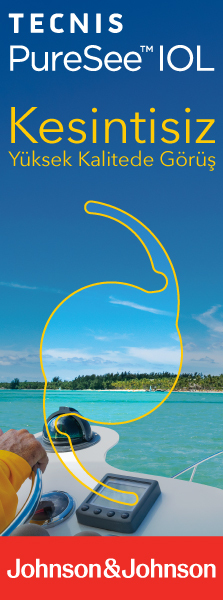TJ-CEO
2006 , Vol 1 , Num 1
Comparison of Sulcus and ‘In the bag’ Intraocular lens implantation in Cases with Posterior Capsule Rupture During Phacoemulsification
Süleyman Demirel Üni. Tıp Fak. Göz Hastalıkları A.D., Isparta
Purpose: Comparison of sulcus and ‘in the bag’ intraocular lens implantation in cases with posterior capsule rupture during phacoemulsification.Materials and Methods: This retrospective study included 32 cases having IOL implantation into the capsule or sulcus with posterior capsule rupture during phacoemulsification from March 2001 to January 2005 in Ophthalmology Department of SDU School of Medicine. Patients were scheduled into two groups according to implantation of IOL into capsule or sulcus. The examination of cases included visual acuity, intraocular pressure, IOL position, retinal detachment, cystoid macular edema and posterior vitreous detachment .
Results: Sulcus implantation was performed to 22 cases and capsule implantation was performed to 10 cases. The postoperative mean follow up was at least 6 months. Final best corrected visual acuities were 0.5 and better in group I and II in the order of, 13 (59%); 8 (80%) cases, 0.1-0.5 in 5 (23%); 1 (10%) cases, less than 0.1 in 4 (18%); 1 (10%) cases. Cystoid macular edema was observed in 4 (18%), 1 (10%) cases. Posterior vitreous detachment was observed in 16 (73%), 6 (60%) cases. In Group I; only in 1 (5%) case retinal detachment developed. There was no statistically significant difference between the groups for long-term outcomes.
Conclusion: Although there was no significant difference in examined parameters between the groups for long-term outcomes, cases having IOL implantation into the capsule have less complication according to percentages. In cases with smaller capsule rupture, less complication may develop because IOL is implanted into the capsule. As it is more physiological, IOL implantation into the capsule is more useful for long-term outcomes. Keywords : Cataract, posterior capsule rupture, sulcus, intraocular lens





